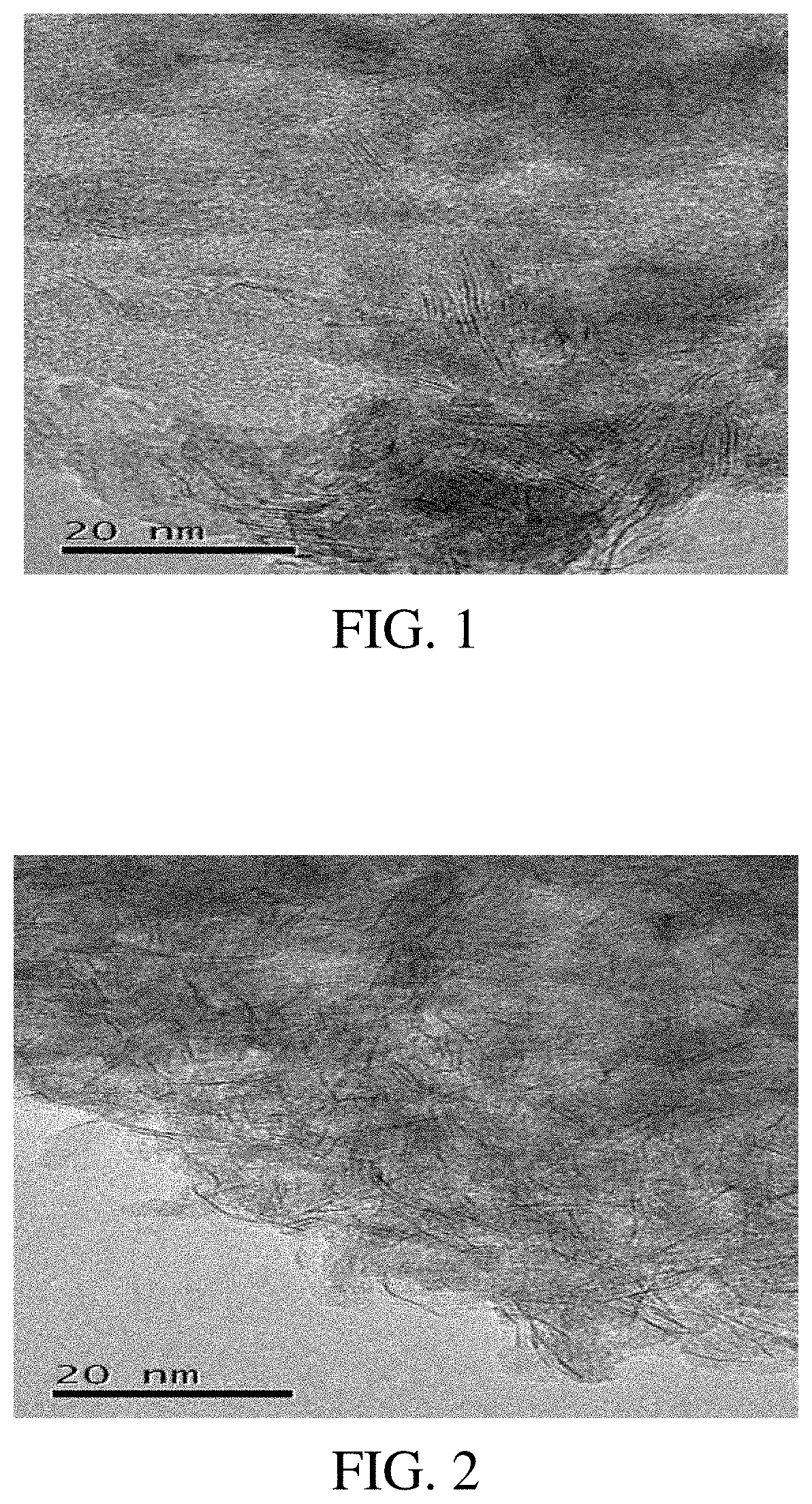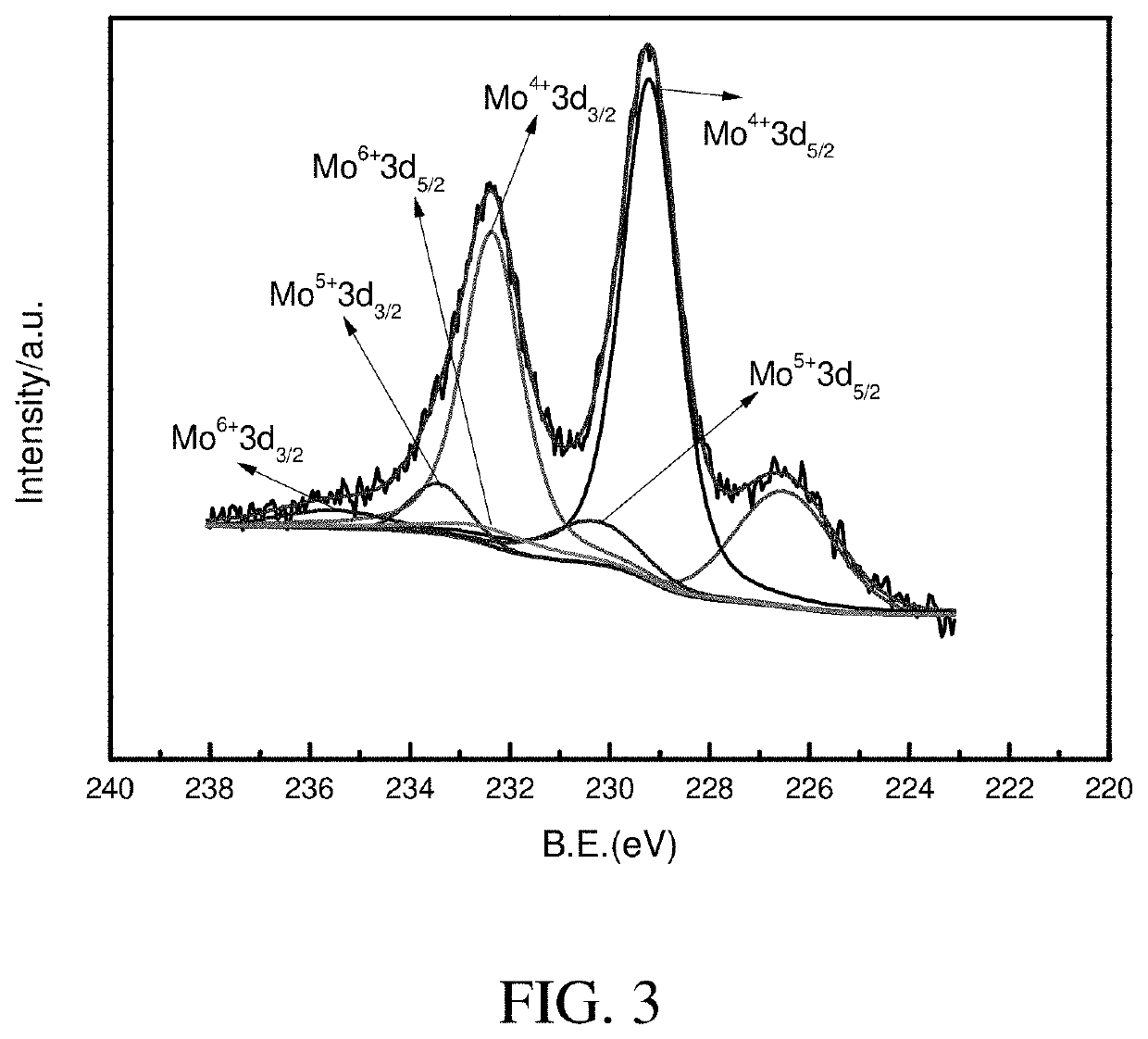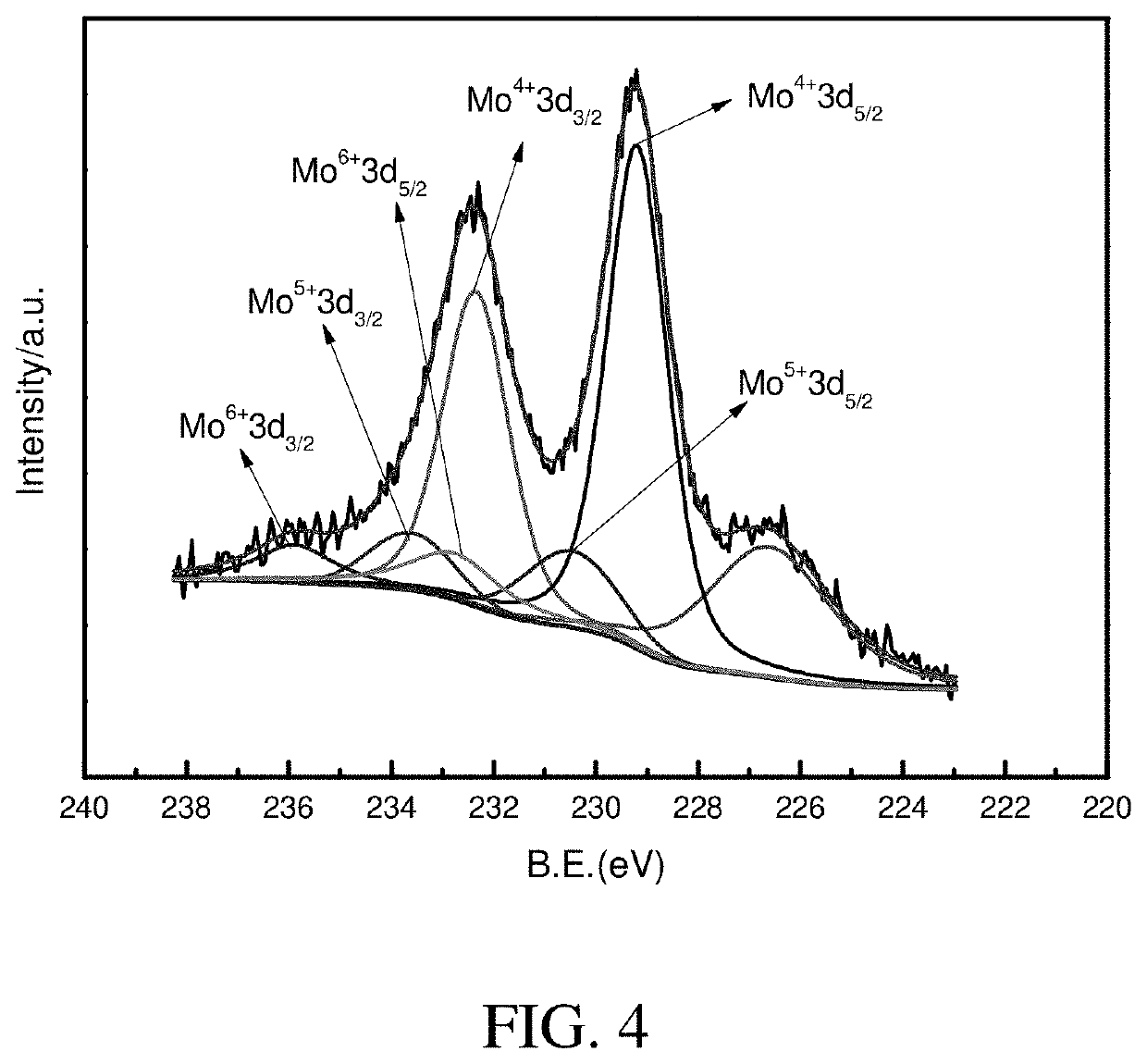Hydrogenation catalyst, preparation process thereof and use thereof
a technology of hydrogenation catalyst and catalyst, which is applied in the field of hydrogenation catalyst, can solve the problems of high oil product loss, high capital and equipment investment, and high operation cos
- Summary
- Abstract
- Description
- Claims
- Application Information
AI Technical Summary
Benefits of technology
Problems solved by technology
Method used
Image
Examples
example 1
[0083]17.6 g of (NH4)6Mo7O24*4H2O was adjusted with ammonia water until ammonium molybdate was completely dissolved, diluted to a constant volume of 100 mL by volumetric flask, then isometrically impregnated to an alumina support, and dried at 120° C. for 3 hours. Then, the sulfuration treatment was carried out with a hydrogen gas containing 1.5% of H2S, wherein the sulfuration temperature was 350° C., the sulfuration pressure was 4.0 MPa, and the sulfuration time was 8 hours, and then the temperature was reduced to room temperature in an N2 atmosphere to produce MoS2 / Al2O3.9.31 g of Co(NO3)2*6H2O was dissolved in 50 mL of deionized water, and the solution was isometrically impregnated to MoS2 / Al2O3 in an N2 atmosphere, and then dried at 90° C. for 4 hours and calcined at 300° C. for 3 hours under an N2 atmosphere to produce a catalyst C-1 MoS2—CoO / Al2O3, wherein the Mo content was 12.5% and the Co content was 4.2%.
example 2
[0084]17.6 g of (NH4)6Mo7O24*4H2O was adjusted with ammonia water until ammonium molybdate was completely dissolved, diluted to a constant volume of 100 mL by volumetric flask, then isometrically impregnated to an alumina support, and dried at 120° C. for 3 hours. Then, the sulfuration treatment was carried out with a hydrogen gas containing 1.5% of H2S, wherein the sulfuration temperature was 350° C., the sulfuration pressure was 4.0 MPa, and the sulfuration time was 8 hours, and then the temperature was reduced to room temperature in an N2 atmosphere to produce MoS2 / Al2O3.9.31 g of Ni(NO3)2*6H2 O was dissolved in 50 mL of deionized water, and the solution was isometrically impregnated to MoS2 / Al2O3 in an N2 atmosphere, and then dried at 90° C. for 4 hours and calcined at 300° C. for 3 hours under an N2 atmosphere to produce a catalyst C-2 MoS2—NiO / Al2O3, wherein the Mo content was 12.5% and the Ni content was 4.2%.
example 3
[0085]17.6 g of (NH4)6Mo7O24*4H2 O was adjusted with ammonia water until ammonium molybdate was completely dissolved, diluted to a constant volume of 100 mL by volumetric flask, then isometrically impregnated to an alumina support, and dried at 120° C. for 3 hours. Then, the sulfuration treatment was carried out with a hydrogen gas containing 1.5% of H2S, wherein the sulfuration temperature was 350° C., the sulfuration pressure was 4.0 MPa, and the sulfuration time was 8 hours, and then the temperature was reduced to room temperature in an N2 atmosphere to produce MoS2 / Al2O3.5.11 g of Ni(NO3)2*6H2 O and4.25 g of Co(NO3)2*6H2 O were dissolved in 50 mL of deionized water, and the solution was isometrically impregnated to MoS2 / Al2O3 in an N2 atmosphere, and then dried at 90° C. for 4 hours and calcined at 300° C. for 3 hours under an N2 atmosphere to produce a catalyst C-3 MoS2—NiO—CoO / Al2O3, wherein the Mo content was 12.5%, the Co content was 3.2% and the Ni content was 3.8%.
PUM
| Property | Measurement | Unit |
|---|---|---|
| molar ratio | aaaaa | aaaaa |
| temperature | aaaaa | aaaaa |
| temperature | aaaaa | aaaaa |
Abstract
Description
Claims
Application Information
 Login to View More
Login to View More - R&D
- Intellectual Property
- Life Sciences
- Materials
- Tech Scout
- Unparalleled Data Quality
- Higher Quality Content
- 60% Fewer Hallucinations
Browse by: Latest US Patents, China's latest patents, Technical Efficacy Thesaurus, Application Domain, Technology Topic, Popular Technical Reports.
© 2025 PatSnap. All rights reserved.Legal|Privacy policy|Modern Slavery Act Transparency Statement|Sitemap|About US| Contact US: help@patsnap.com



